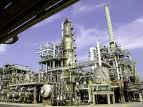A presentation by Haldor Topsoe’s J. Michael Poulsen on “Solutions to Challenges in Hydrotreating Sour Fuel Gases,” at the RefComm® refining conference in Galveston focused on recovering olefins and diolefins in the methane rich fraction of treated off-gases. However, accompanying these valuable components are organic sulfur species, including mercaptans and thiophenes, which require further desulfurization due to more stringent environmental regulations.
Poulsen noted the development of a fuel gas hydrotreating solution that removes H2S, as well as alkenes, CO, CO2 and organic sulfur species. But first, there are still challenges related to the chemistry and analysis of sulfur compounds. Also, a COS (carbonyl sulfide) hydrolysis catalyst that can avoid recombination is needed when olefins are present at the ppm level, along with a high H2S concentration.
Excess fuel gas production is becoming more common as refiners run new types of feedstocks through their plant. The traditional route to H2S removal from fuel gas has been accomplished with an amine system to absorb the H2S and convert to elemental sulfur in a Claus plant. Gas streams, especially those from cokers, contain other sulfur compounds such as mercaptans, thiophenes and sulfides, which are not effectively treated by an amine system, which is why many refiners are showing interest in understanding what additional steps are required to zero out organic sulfur content.








Leave a Reply
You must be logged in to post a comment.